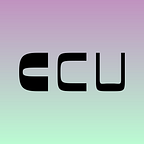Behind The Screens: Eloi el Bon Noi
An interview with composer and live coder Eloi el Bon Noi.
Eloi el Bon Noi is a composer and live coder, interested in new forms of music and psychoanalysis. In this interview, we’d like to talk about his practices and tools, as well as work in the community and the way he copes with the radical and drastic changes in their practice resulting from the corona crisis.
1. What was your first encounter with live coding and what are your sources of inspiration?
A friend of mine kept pressing me to try SuperCollider and code music while I was studying music composition (I was an Ableton integrist at the time). In the end, he convinced me and I spent 8 months waking up at 7am to watch some of Eli Fieldsteel’s YouTube tutorials. These videos are precious gifts, don’t miss them. The next step was learning and falling in love with TidalCycles.
I find inspiration in other musicians and composers. I seem to remember that Paco de Lucía, the famous guitar player, once said that “Only mediocre people copy. Geniuses steal”. I mean, the most important thing I was taught when studying composition was that a good composer should have in mind an extensive catalog of scores and sound references in order to use them as a guide when he wants to build his own music. With symphonic music, it’s not always easy to find the scores where you can learn such processes without spending large amounts of money or resorting to piracy. Fortunately, in live coding culture, the circulation of information is part of its founding philosophy, and platforms such as YouTube and other kinds of forums make it possible for anyone who wants to make up their own catalog of resources.
2. What are your preferred platform(s) to use and why?
I’m using TidalCycles because it allows me to make the kind of music I like in a very creative way, and quickly. I bought a Korg Volca a couple of weeks ago, excited with the idea of adding some hardware to my set. In the future, I’ll spend some time learning Orca. I’m sad to realize I completely forgot SuperCollider.
3. How has live coding influenced your practice of making and thinking about art?
Live coding has completely changed my approach to art and its influence will for sure be present in my future projects. However, I’m also very interested in the mixture of digital and organic textures. In my last piece, called «Artells», I mixed some baroque harmonic cadences played by a harp with rigid algorithmic patterns written in Tidal. That’s the way I think I’ll produce in the future.
4. In what form are randomness or other algorithms applied in your practice or performance? Do you try to pursue serendipity and how or why not?
Unlike most coders around me, I have a tendency to write large blocks of code to favor randomization and avoid cyclic repetition of patterns.
This is a weakness of mine: a horror vacui that pushes me to constantly modify the code. It is, therefore, a way of writing that favors the appearance of unexpected structures.
5. Could you share a sneak-peek into any upcoming projects or things you are currently working on?
I’m working on a soundtrack where music will be mostly performed and recorded using acoustic instruments such as voice and strings. A small part of this soundtrack will use TidalCycles patterning kitchen sounds to get minimal structures and polyrhythms.
I’m also working on a spoken-word piece for a thinker / writer / performer and I’ll be using some collage techniques. TidalCycles is not the best tool for this purpose.
I would also like to share with you my work Comentaris Polifònics (Polyphonic Comments), a series of pieces which explore the synchronicity boundaries between music and image in a chaotic
environment provided by short videos extracted from the web. You can check it out on my website www.eloielbonnoi.com
6. Do you have any other thoughts you would like to share with the readers?
I would like to express my gratitude to «Behind the Screens» for including me. When I joined the TopLap community I clearly realized that writing code, beyond being a very amusing entertainment, is an empowering activity. With each passing day, I am more convinced that live coding makes the world a better place to be.
—
This article is part of the Behind The Screens series of Creative Coding Utrecht — a series of events where digital artists and live coders create a piece in ten minutes.
Watch Season 1 // Watch season 2 // More interviews
The Behind The Screens series is sponsored by Stimuleringsfonds Creatieve Industrie.
